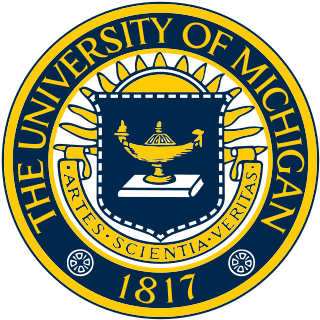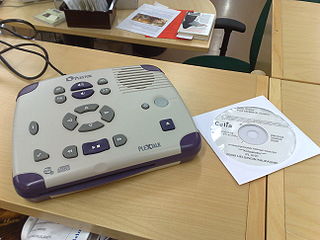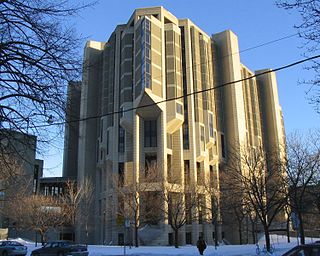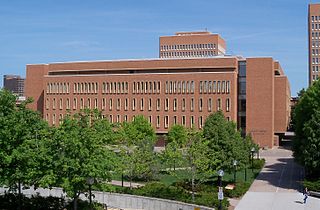In computing, AAP DTD is a set of three SGML Document Type Definitions for scientific documents, defined by the Association of American Publishers. It was ratified as a U.S. standard under the name ANSI/NISO Z39.59 in 1988, and evolved into the international ISO 12083 standard in 1993. It was supplanted as a U.S. standard by ANSI/ISO 12083 in 1995.

Acid-free paper is paper that, if infused in water, yields a neutral or basic pH. It can be made from any cellulose fiber as long as the active acid pulp is eliminated during processing. It is also lignin- and sulfur-free. Acid-free paper addresses the problem of preserving documents and preserving artwork for long periods.
A technical report is a document that describes the process, progress, or results of technical or scientific research or the state of a technical or scientific research problem. It might also include recommendations and conclusions of the research. Unlike other scientific literature, such as scientific journals and the proceedings of some academic conferences, technical reports rarely undergo comprehensive independent peer review before publication. They may be considered as grey literature. Where there is a review process, it is often limited to within the originating organization. Similarly, there are no formal publishing procedures for such reports, except where established locally.
The National Information Standards Organization is a United States non-profit standards organization that develops, maintains and publishes technical standards related to publishing, bibliographic and library applications. It was founded in 1939 as the Z39 Committee, chaired from 1963-1977 by Jerrold Orne, incorporated as a not-for-profit education association in 1983, and assumed its current name in 1984.
An OpenURL is similar to a web address, but instead of referring to a physical website, it refers to an article, book, patent, or other resource within a website.

The University of Michigan Library is the academic library system of the University of Michigan. The university's 38 constituent and affiliated libraries together make it the second largest research library by number of volumes in the United States.

Digital accessible information system (DAISY) is a technical standard for digital audiobooks, periodicals, and computerized text. DAISY is designed to be a complete audio substitute for print material and is specifically designed for use by people with "print disabilities", including blindness, impaired vision, and dyslexia. Based on the MP3 and XML formats, the DAISY format has advanced features in addition to those of a traditional audio book. Users can search, place bookmarks, precisely navigate line by line, and regulate the speaking speed without distortion. DAISY also provides aurally accessible tables, references, and additional information. As a result, DAISY allows visually impaired listeners to navigate something as complex as an encyclopedia or textbook, otherwise impossible using conventional audio recordings.

Thirty-one constituent and affiliated libraries combine to make the library system of the University of California, Berkeley the sixth largest research library by number of volumes in the United States.
The Serial Item and Contribution Identifier (SICI) was a code used to uniquely identify specific volumes, articles or other identifiable parts of a serial. It was "intended primarily for use by those members of the bibliographic community involved in the use or management of serial titles and their contributions". Developed over 1993–1995, NISO adopted SICI as a standard in 1996, then reaffirmed it in 2002. It was withdrawn in 2012.

Columbia University Libraries is the library system of Columbia University and one of the largest academic library systems in North America. With 15.0 million volumes and over 160,000 journals and serials, as well as extensive electronic resources, manuscripts, rare books, microforms, maps, and graphic and audio-visual materials, it is the fifth-largest academic library in the United States and the largest academic library in the State of New York. Additionally, the closely affiliated Jewish Theological Seminary Library holds over 400,000 volumes, which combined makes the Columbia University Libraries the third-largest academic library, and the second-largest private library in the United States.

The Yale University Library is the library system of Yale University in New Haven, Connecticut. Originating in 1701 with the gift of several dozen books to a new “Collegiate School," the library's collection now contains approximately 14.9 million volumes housed in fifteen university buildings and is the third-largest academic library system in North America and the second-largest housed on a singular campus.
The University of British Columbia Library is the library system of the University of British Columbia (UBC). The library is one of the 124 members of the Association of Research Libraries (ARL). In 2017, UBC Library ranked 29th among members of the ARL for the number of volumes in library, making it the third largest Canadian academic library after the University of Toronto and the University of Alberta. However, UBC Library ranked 23rd for the titles held and second in Canada, and had a materials expenditures of $13.8 million, placing it 44th.

Michigan State University Libraries is the academic library system of Michigan State University in East Lansing, Michigan, United States. The library system comprises nine branch locations including the Main Library. As of 2021-22, the MSU Libraries ranked 26th among U.S. and Canadian research libraries by number of volumes and 7th among U.S. and Canadian research libraries by number of titles held.

The University of Toronto Libraries system is the largest academic library in Canada and is ranked third among peer institutions in North America, behind only Harvard and Yale. The system consists of 39 libraries located on University of Toronto's three university campuses: St. George, Mississauga and Scarborough. This array of college libraries, special collections, and specialized libraries and information centres supports the teaching and research requirements of 215 graduate programs, over 60 professional programs, and more than 700 undergraduate degree programs. In addition to more than 12 million print volumes in 341 languages, the library system currently provides access to 150,467 journal titles, millions of electronic resources in various forms and almost 30,000 linear metres of archival material. More than 150,000 new print volumes are acquired each year.

The William F. Ekstrom Library is the main branch of the University of Louisville Libraries system. Located on the university's Belknap Campus in Louisville, Kentucky, Ekstrom Library contains collections in the humanities, sciences, and social sciences. The University of Louisville Libraries is a member of the Association of Research Libraries (ARL) and, along with Ekstrom, includes libraries for Art, Health Sciences, Law, and Music, as well as the Archives and Special Collections. The University of Louisville Libraries hold approximately 2.2 million print volumes, subscribe to several thousand serials, and provide full-text electronic access to approximately 74,000 journals. Ekstrom is a Federal Depository Library and houses the largest selective government document collection in Kentucky.
The United States contains some of the largest academic libraries in the world. Among the most notable collections are those at Harvard University, Yale University, the University of Michigan, the University of Illinois at Urbana–Champaign, and Columbia University. Many others were founded more recently, and are consequently on a much smaller scale.
Robert Freeman Asleson was an American publisher who was a major contributor to the publishing, library and information industries. He led a number of key information companies as they evolved from print, to microfilm, to mainframe, to CD-ROM and then eventually to web based databases. He also brought professional management to entrepreneurial library companies. Some of these organizations are now among the titans of the library industry.

The University of Minnesota Libraries is the library system of the University of Minnesota Twin Cities campus, operating at 12 facilities in and around Minneapolis–Saint Paul. It has over 8 million volumes and 119,000 serial titles that are collected, maintained and made accessible. The system is the 17th largest academic library in North America and the 20th largest library in the United States. While the system's primary mission is to serve faculty, staff and students, because the university is a public institution of higher education its libraries are also open to the public.

The Journal Article Tag Suite (JATS) is an XML format used to describe scientific literature published online. It is a technical standard developed by the National Information Standards Organization (NISO) and approved by the American National Standards Institute with the code Z39.96-2012.

Morris Library is the main academic library on the campus of Southern Illinois University Carbondale, in Carbondale, Illinois. Named for Delyte W. Morris who served as President of Southern Illinois University from 1948 to 1970, the library holds more than 4 million volumes, 53,000 current periodicals and serials, and over 3.6 million microform units. Morris Library also provides access to the statewide automated library system and to an array of electronic sources. These figures make Morris Library among the top 50 largest research libraries in the United States. Library users have access to I-Share and to a comprehensive array of databases and other electronic data files. As the campus center for access to academic information and collaborative academic technology projects, Morris Library provides a wide range of services, including reference assistance, instructional and technical support, distance learning, geographic information systems (GIS), and multimedia courseware development. Morris Library is a member of the Consortium of Academic and Research Libraries in Illinois (CARLI), Association of Research Libraries (ARL), and the Greater Western Library Alliance (GWLA). Delyte's, a new coffee shop named after former SIU President Delyte W. Morris operates near the entrance of the library. The library occupies 8 floor.












